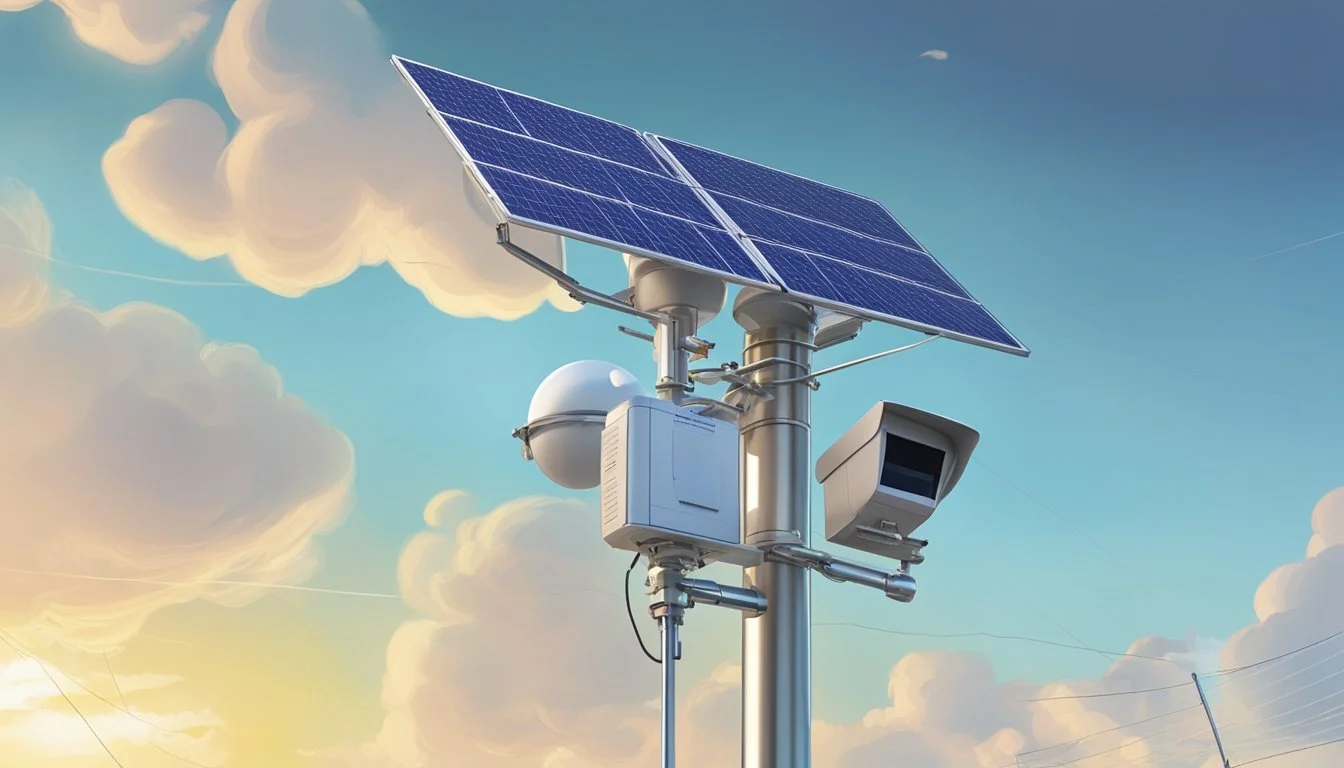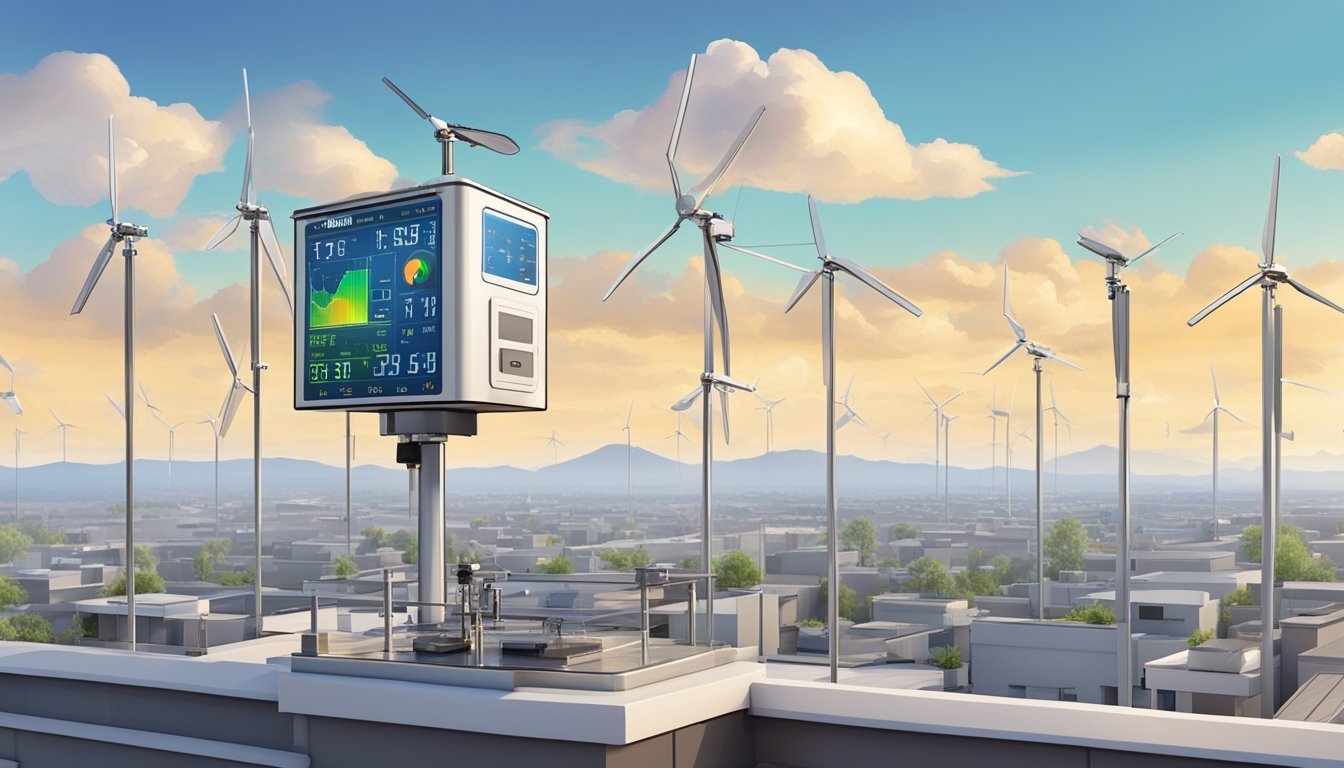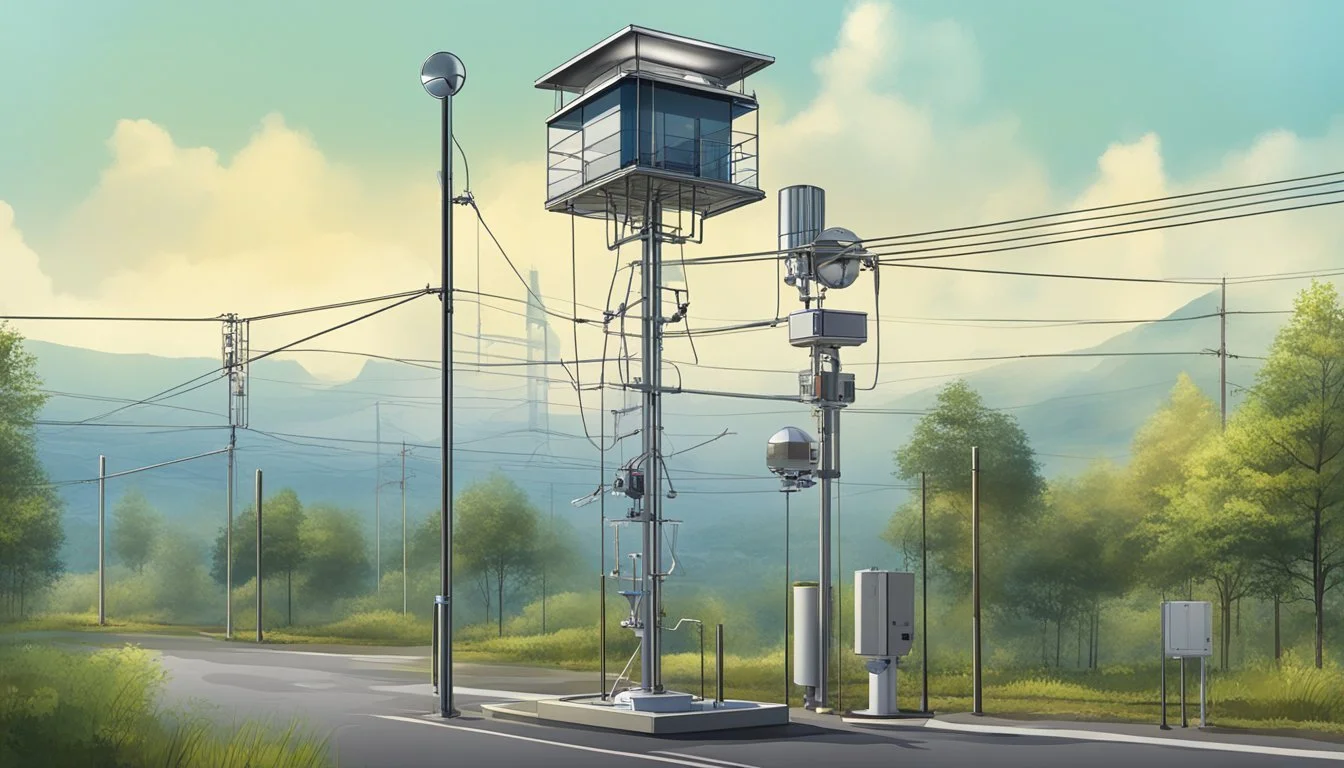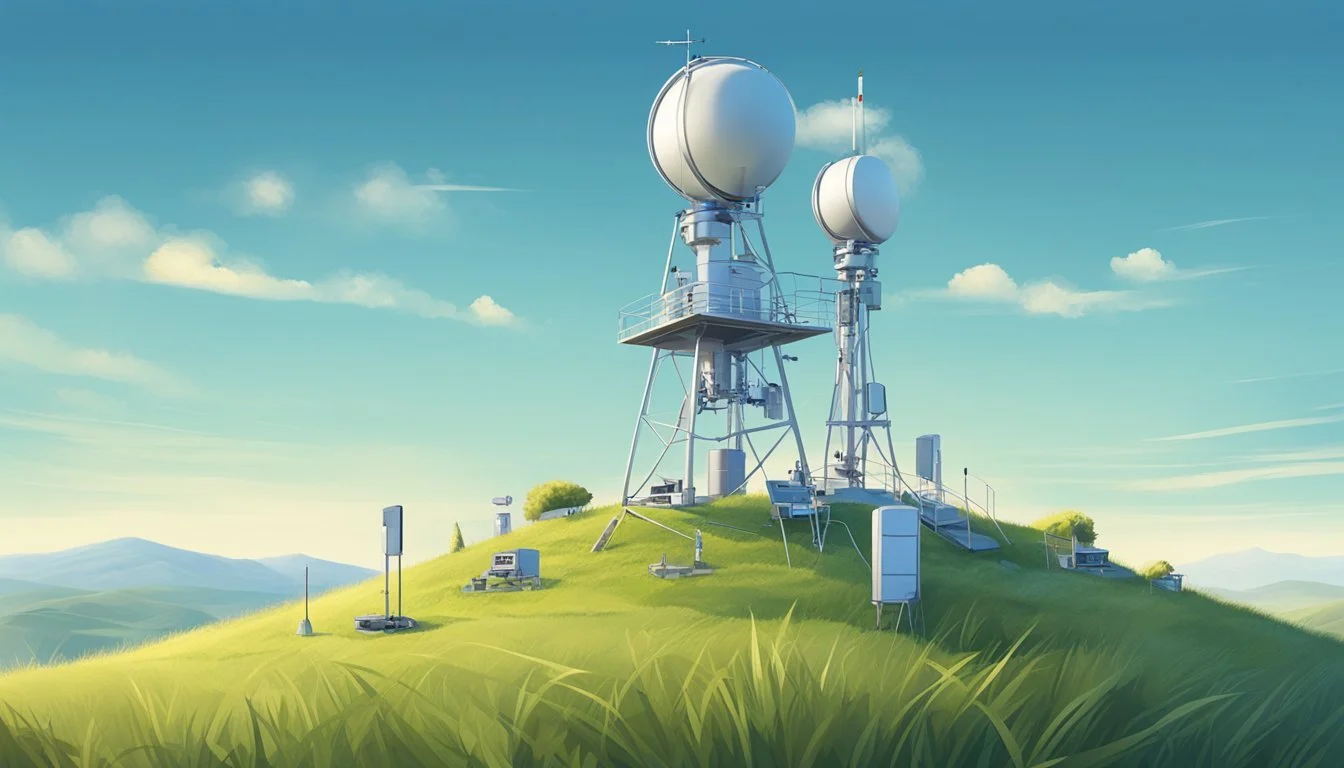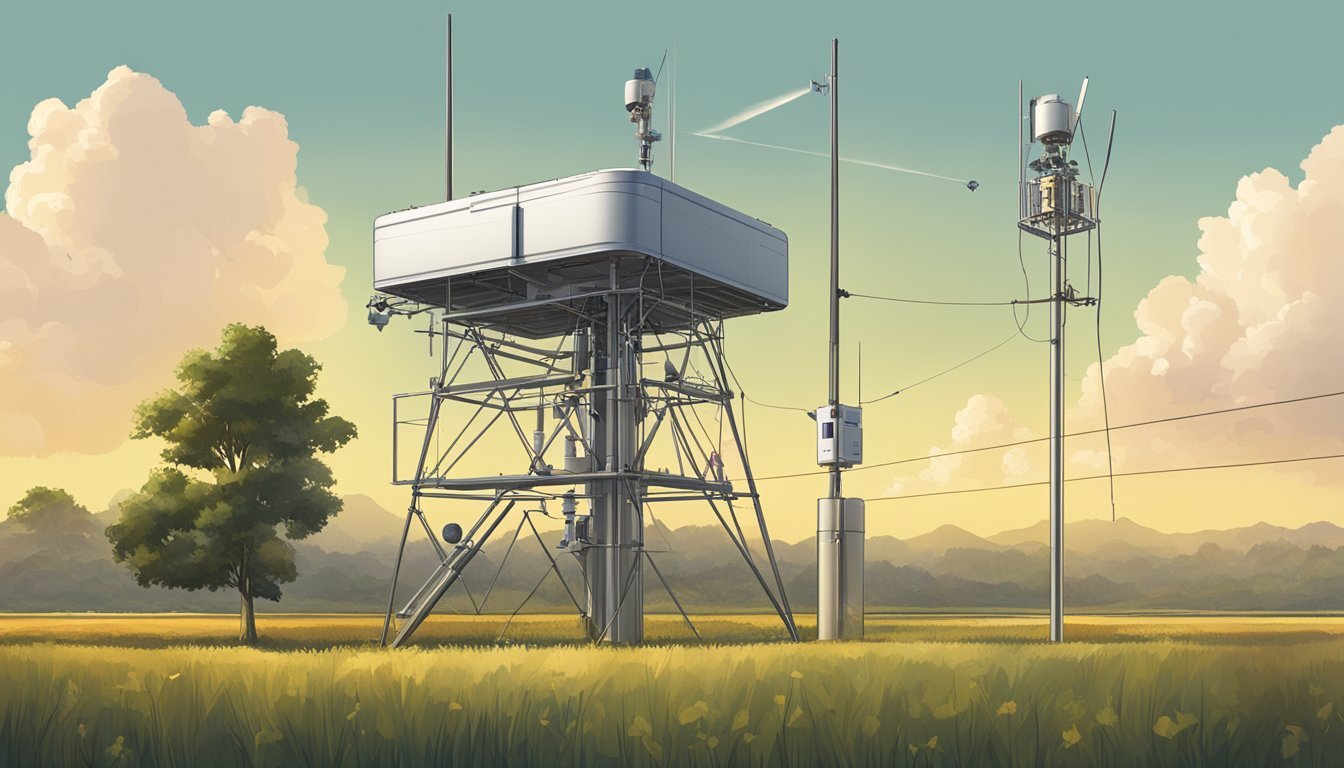The Ultimate Guide to Using an Automated Weather Station
Essential Tips for Homestead Real-Time Monitoring
Automated weather stations are transforming the way homesteaders monitor their local weather conditions. They act as a personal meteorological system, providing real-time data on various weather parameters such as temperature, humidity, rainfall, wind speed, and direction. With this technology, individuals can collect precise and continuous weather readings from the comfort of their own property. This data is instrumental for making informed decisions related to farming, gardening, and general property management, ensuring that tasks are carried out at optimal times according to the weather.
Installing a weather station on a homestead offers a valuable advantage in planning and preparing for imminent weather changes. Real-time monitoring allows for proactive measures to protect crops, livestock, and infrastructure from adverse weather conditions. By customizing alerts and understanding the specific weather patterns that affect their land, homesteaders can significantly reduce the element of surprise that weather often presents. Moreover, the data recorded over time can be analyzed to understand long-term climatic trends and variations, which is essential in adapting homesteading practices to changing environmental conditions.
The Significance of Real-Time Data
Real-time weather data is indispensable for precise and efficient weather monitoring on a homestead. It equips homeowners with the necessary information to make timely decisions based on current weather conditions.
Understanding Real-Time Weather Monitoring
Real-time weather monitoring encompasses the constant observation and recording of atmospheric conditions. Automatic weather stations collect a variety of parameters such as temperature, wind speed, humidity, and precipitation, offering homesteaders the ability to respond quickly to changing weather scenarios. This immediate accessibility to data translates to better preparedness for adverse weather, efficient water resource management, and optimized planning for agricultural activities.
Temperature: Immediate adjustments to heating or cooling systems inside the greenhouse or home.
Wind Speed: Precautions against potential wind damage by securing loose objects.
Humidity: Informed irrigation decisions to address plant water needs.
Precipitation: Implementation of rain harvesting strategies during sudden rainfalls.
The Role of Automatic Weather Stations
Automatic weather stations (AWS) play a pivotal role in supplying real-time weather data. Designed to be both robust and self-sufficient, these stations employ sensors and electronic components to measure weather conditions continuously. They then transmit this data through various communication technologies such as Wi-Fi, cellular networks, or satellite links, ensuring homesteaders receive up-to-date information. The reliance on AWS has become a global standard for weather monitoring, offering precise and immediate data that is essential for effective homestead management.
Data Transmission: AWS use secure and fast transmission methods to provide real-time data to users.
Accessibility: Easy access to data through user-friendly interfaces on computers, tablets, or smartphones.
Visualization: Advanced software allows for visual representation of data, aiding in comprehension and utilization.
Choosing Your Weather Station
When selecting an automated weather station for real-time weather monitoring, one should consider the variety available and the specific factors that influence installation on a homestead.
Types of Weather Stations
Home Weather Stations: Ideal for enthusiasts and homesteaders, these are user-friendly and often easy to install. They typically monitor basic parameters like temperature, humidity, and barometric pressure.
Professional Weather Stations: Designed for more robust applications, these stations include advanced features but require a larger budget and more involved installation.
Factors to Consider Before Installation
Budget: Understand the initial costs, along with any ongoing expenses for maintenance or subscription services.
Installation Requirements: Assess the ease of installation, which depends on the design of the weather station and the resources needed for proper setup.
Intended Use: Consider whether the station meets the specific needs of your homestead, such as the types of weather events it can monitor and report.
Local Climate: Certain weather stations are better suited for specific climates, so choose a model that can withstand local weather conditions.
Connectivity: Ensure the model has the appropriate connectivity options, like Wi-Fi, to transmit data effectively.
By considering these facets, one can select a weather station that not only fits their budget but also provides the necessary resources for accurate and reliable home weather monitoring.
Installation and Setup
To harness the full potential of an automated weather station, proper installation and software configuration are crucial. These steps ensure accurate data collection and enable real-time weather monitoring on a homestead.
Physical Installation
Site Selection:
Choose an open area free from obstructions for the weather station.
Avoid proximity to buildings, trees, and reflective surfaces to ensure unimpeded airflow and radiation.
Installation Process:
Mount the station at a height of 4-6 feet above the ground for optimal sensor performance.
Ensure the rain gauge is level, and the anemometer is placed well above any potential wind barriers.
Sensor Placement:
Position temperature and humidity sensors in a shaded area to prevent false readings from direct sunlight.
Install solar panels, if included, in a spot that receives ample sun exposure.
Software Configuration
Connectivity Setup:
Confirm compatibility with your home's Wi-Fi network for seamless data transmission.
Follow the manufacturer's instructions to integrate the weather station with the network.
Software Installation:
Install any required software applications or firmware provided by the manufacturer.
Set up user preferences, such as units of measure and thresholds for alerts.
By adhering to these installation and configuration guidelines, one ensures their automated weather station provides reliable and precise weather updates, which are indispensable for effective homestead management.
Core Components of Weather Stations
Automated weather stations are integral for providing precise, real-time meteorological data. They are comprised of various sensors that measure specific environmental elements, data loggers that record this information, and connectivity options for data transmission.
Sensors and Their Functions
Temperature Sensors: Measure ambient air temperature.
Humidity Sensors: Record relative humidity levels, which indicate the amount of moisture in the air.
Barometric Pressure Sensors: Detect atmospheric pressure, valuable for forecasting weather changes.
Wind Speed and Direction Sensors (Anemometers and Wind Vanes): Gauge wind speeds and the direction it is blowing from.
Rain Gauges: Collect precipitation data, helping to measure rainfall amounts over a period.
These sensors collectively deliver a comprehensive understanding of the current weather conditions on a homestead.
Data Loggers and Connectivity
Data Logger: A device that compiles the vast influx of data from the various sensors. It timestamps and stores this information for analysis, forming the "brain" of the weather station.
Connectivity:
Wired: Data loggers may be connected to computers or other devices via cables to transmit data.
Wireless: More advanced systems use Wi-Fi or radio signals to send data wirelessly.
Data Accessibility:
Elements such as temperature, humidity, rain, wind speed, and barometric pressure become accessible remotely for real-time monitoring through various connectivity arrangements.
The information can also be integrated into local networks for homestead-specific weather analysis or shared with broader meteorological networks for climate research and forecasting.
Data loggers and their connectivity options are pivotal in automating the weather monitoring process, ensuring that weather data is accurate, up-to-date, and actionable.
Optimizing Station Placement
Selecting the optimal location for an automated weather station is pivotal to obtaining accurate and reliable data. It involves careful consideration of environmental factors and adherence to manufacturer's guidelines for sensor placement.
Location and Exposure
Location:
Choose an open area away from obstructions that might block wind flow or create shadows.
Ideal locations are those that reflect the average micro-climate of the area, like a flat, open field.
Exposure:
Sensors should be placed at the recommended height, usually 1.5 to 2 meters above the ground for standard temperature readings.
Rain gauges need an unobstructed path to the sky, away from tall structures or trees.
Avoiding Common Placement Errors
Physical Barriers:
Do not place the station too close to buildings, trees, or hills that may influence temperature, wind, and rainfall measurements.
Artificial Heat Sources:
Keep the station away from surfaces that radiate heat, such as concrete or asphalt, and avoid placement near air conditioners or exhaust vents.
Powering Your Station
The longevity and efficiency of an automated weather station largely depend on its power management. With the right combination of batteries and solar options, a weather station can effectively harness renewable energy to function continuously.
Battery and Solar Options
Automated weather stations often rely on a dual power system of batteries and solar panels to ensure consistent operations. Batteries serve as the primary storage for electrical energy, allowing the station to function during periods without sunlight. There are various types of batteries to consider:
Lead-Acid Batteries: Durable and cost-effective, but require regular maintenance.
Lithium-Ion Batteries: Higher energy density and longer lifespan with less maintenance.
For renewable energy sourcing, solar panels are indispensable, converting solar energy into electrical power. They should be sized adequately to meet the energy demands of the station’s sensors and communication equipment. It's essential to ensure that the solar panels receive a minimum of 4-6 hours of daylight to maximize energy collection. Here is a brief overview of the specifications typically considered:
Solar Panel Type: Monocrystalline
Efficiency: High
Durability: High
Cost: Higher
Solar Panel Type: Polycrystalline
Efficiency: Moderate
Durability: Moderate
Cost: Lower
Solar Panel Type: Thin-Film
Efficiency: Lower
Durability: Lower
Cost: Lowest
Maximizing Energy Efficiency
Efficiency in power usage not only prolongs the life of your power source but also ensures that the weather station functions effectively in varying conditions. Methods to enhance energy efficiency include:
Regular Maintenance: Periodically cleaning solar panels and checking battery connections can prevent power loss.
Smart Energy Management: Employing controllers and regulators to manage the charge and discharge cycles of batteries optimizes their performance and lifespan.
By focusing on sustainable power sources such as solar energy and implementing proper management techniques, an automated weather station can remain a reliable tool for real-time weather monitoring.
Understanding Weather Data
In managing a homestead, it is critical to have a robust understanding of weather data and its applications. This understanding is pivotal for accurate forecasting and effective decision-making based on meteorological parameters.
Meteorological Parameters
Temperature: This is the measure of air warmth and is indicative of the day's comfort level.
Humidity: Displaying water vapor levels in the air, humidity directly affects precipitation patterns and soil moisture—key factors for agriculture.
Pressure: Atmospheric pressure can signal changing weather patterns, with falling pressure often preceding storms.
Wind Speed and Direction: These parameters are essential for predicting weather movements and assessing potential for wind energy.
Precipitation: Measures rainfall or snowfall, which are crucial for water resource planning.
Solar Radiation: Important for those utilizing solar panels and for understanding heat levels throughout the day.
Interpreting Data for Forecasting
The data collected by an automated weather station must be analyzed to produce accurate weather forecasts.
Trends Over Time: By analyzing consistent data over extended periods, meteorologists can observe patterns that indicate weather changes.
Data Correlation: Cross-referencing various meteorological parameters—a sudden drop in pressure coupled with increased wind speeds can indicate an approaching storm system.
Real-time Awareness: Fast updates allow for immediate responses to changing weather conditions, which is particularly useful in agricultural planning and avoiding weather-related hazards.
Understanding these parameters and their interplay is critical for homesteaders and meteorologists alike to anticipate weather conditions and make well-informed decisions.
Maintenance and Calibration
Precision and reliability in weather monitoring are paramount. Regular maintenance and meticulous calibration are crucial in ensuring that a homestead’s automated weather station operates optimally and produces accurate readings.
Routine Weather Station Maintenance
Daily Maintenance
Visual Inspection: Check sensors for obstructions or debris.
Cleaning: Gently clean sensors and housing to remove dirt and residue.
Monthly Maintenance
Battery Check: Ensure power sources are functioning and replace or recharge batteries as necessary.
Connectivity: Verify that data transmission to consoles or online platforms is consistent.
Annual Maintenance
Thorough Inspection: Examine all components for signs of wear or damage.
Replacement: Replace worn or damaged parts as needed.
Calibration Procedures
Temperature Calibration
Test: Place a standard thermometer next to the temperature sensor.
Adjust: If discrepancies are found, go into the weather station’s settings to correct the temperature sensor values.
Humidity Calibration
Test: Use a calibrated hygrometer to test the station’s humidity readings.
Adjust: Correct any inaccuracies in the station’s software by adjusting the humidity settings.
Precipitation Calibration
Prepare the rain gauge by ensuring it's free from blockages.
Test: Conduct a water test to check the accuracy of the rain measurements.
Adjust: Alter settings if measurements deviate from expected values.
Performing routine maintenance and calibration on automated weather stations is essential to maintain accuracy. Testing the equipment against known standards allows for the detection and correction of any inaccuracies, while troubleshooting any anomalies ensures the station remains reliable. It is advisable for users to be methodical in their approach to maintenance and calibration to preserve the integrity of the weather data collected.
Extending Weather Station Capabilities
Automated weather stations have the potential to become even more powerful with the right extensions. Whether for agricultural applications, research, or personal interest, enhancing a station's capabilities can lead to more precise weather monitoring and forecasting.
Additional Modules and Sensors
Extending the functionality of an automated weather station typically involves incorporating additional modules and sensors. Each added component brings the ability to monitor a different aspect of weather:
Temperature Sensors: Essential for tracking both highs and lows, critical for climate-sensitive crops.
Humidity Sensors: Key for understanding moisture levels in the air, influencing decisions like irrigation.
Wind Speed and Direction Sensors: Crucial for applications such as aviation and marine navigation.
Rain Gauges: Necessary for measuring precipitation, aiding in flood warnings and water management.
By tailoring sensor selection to specific needs, users can create a versatile and comprehensive monitoring system.
Integrations with Other Systems
A weather station’s utility enhances significantly through integration with other systems and software.
Data Loggers: These devices collect and store sensor data, which can be analyzed using various software applications for insights into weather patterns.
Customizable Alerts: Users can set up alerts based on specific weather conditions to receive timely notifications, crucial for protecting life and property.
Open Protocols: Stations with open communication standards can share data with other devices and adapt to various applications, ranging from smart home setups to expansive agricultural systems.
Integrations not only streamline the process of weather data collection and analysis but also enable equipment to act upon the received data, such as automatically adjusting building climate controls or scheduling irrigation in agriculture.
Real-world Applications of Automated Weather Stations
Automated weather stations are pivotal for various sectors, providing essential data for decision-making. They serve as a critical tool in weather monitoring and data collection for numerous real-world applications from agriculture to disaster response.
Agriculture and Crop Management
Automated weather stations play a crucial role in the agricultural industry. They foster informed decision-making in crop management by providing accurate, real-time data on local weather conditions. Farmers rely on these stations to:
Monitor microclimatic variations that directly affect plant health.
Implement precision farming techniques to optimize irrigation schedules and pesticide applications, effectively increasing crop yield and conserving resources.
Emergency Preparedness and Response
In disaster management, automated weather stations are indispensable. They enhance:
Environmental monitoring capabilities, by offering immediate meteorological data crucial for early warning systems.
Emergency response strategies, through continuous tracking of weather patterns that may lead to natural disasters, such as storms, aiding in evacuation planning and resource allocation.
Renewable Energy and Resource Management
The integration of automated weather stations into the renewable energy sector is transforming resource management. These stations are instrumental in:
Assessing climatic conditions, thus enabling optimal placement and operation of wind and solar farms.
Contributing to sustainable practices by helping renewable energy sources operate more efficiently through precise, location-specific weather data.
Leveraging Data for Environmental and Weather Trends
The automated weather station is not just a tool for the immediate weather check but a robust instrument for environmental analysis. It meticulously collects data, offering insights into long-term weather patterns and environmental changes. This section focuses on how one can use this data for analyzing trends and predicting future environmental shifts.
Long-Term Data Collection and Analysis
Automated weather stations facilitate the continuous collection of data, which includes temperature, humidity, wind speed, and precipitation. Over time, this data becomes a historical record that is imperative for understanding local climate trends. Scientists use these records to study:
Variations in temperature over different time scales
Changes in precipitation patterns and their impact on the local ecosystem
Analyzing this data helps in identifying significant changes in the environment, allowing for a proactive approach to agricultural planning and water resource management.
Predicting Environmental Changes
The collection of real-time data from automated weather stations assists in:
Anticipating severe weather conditions, such as storms or droughts
Harnessing predictive models to forecast environmental shifts
These predictions are critical for homesteaders and farmers who rely on accurate weather forecasts for crop management and livestock safety. By leveraging cutting-edge algorithms and historical data, these stations provide an edge in understanding and preparing for environmental changes.
Advanced Features and Connectivity
In the realm of automated weather stations, the advanced features and connectivity options stand out as pivotal elements that transform rudimentary data collection into a sophisticated, real-time weather monitoring system.
Remote Access and Monitoring
Automated weather stations equipped with Wi-Fi or other forms of internet connectivity offer the distinct advantage of remote access. Users have the capability to monitor weather conditions from any location with internet access. This feature often relies on data transmission technologies that enable the station to send real-time information to a centralized database, which can be accessed via a web portal or desktop software.
Mobile Alerts and Applications
Modern weather stations harness the power of mobile applications to deliver weather alerts directly to a user's smartphone or tablet. These customizable alerts can be tailored to notify the user about specific weather events, such as sudden rain, high winds, or unwanted climatic changes. The applications ensure that individuals are always aware of the weather conditions on their homestead, enhancing decision-making and response times to weather-related risks.
User Experience and Customization
When utilizing an automated weather station, users benefit significantly from a user-friendly interface and the ability to personalize weather data and alerts. These features enhance convenience and ensure a tailored user experience.
User-Friendly Interface
Modern automated weather stations are equipped with intuitive software that caters to users of varying technical skill levels. Clarity and ease of use are paramount, and the graphical interface usually presents weather data in an easily digestible format. For instance, weather parameters such as temperature and rainfall can be displayed in real-time graphs or comprehensive dashboards, allowing for quick assessment of current weather conditions. Additionally, access to historical data is often facilitated through well-organized menus and straightforward navigational systems.
Personalization of Weather Data and Alerts
Customization is a key component of the user experience with automated weather stations. Users can often customize alerts based on specific weather conditions that are critical to their homestead's operations. For example:
Temperature Thresholds: Receive alerts when the temperature drops below freezing to prevent crop damage.
Wind Speed Alerts: Get notified when wind speeds exceed safe levels for outdoor activities.
Users can typically select the delivery method of these alerts, whether it be through email, SMS, or app notifications, directly enhancing the convenience factor. The ability to set thresholds for customizable alerts means that users can ensure the safety of their property and adjust their plans in tune with accurate, real-time weather updates.
Troubleshooting Common Issues
Automated weather stations are reliable, but like any technology, they can occasionally encounter issues. Efficient troubleshooting ensures continuous, accurate weather monitoring.
Identifying and Resolving Problems
Power Issues: A weather station needs power to function. Check for a low battery and replace it if necessary. For solar-powered units, one should verify connections and the positioning of solar panels. Sometimes, the battery may not recharge due to faulty wiring—inspecting and repairing the solar panel wiring is essential in such cases.
Sensor Synchronization: The sensors and the base station need to synchronize to communicate. One can reset the system by placing new batteries in the sensors and base station, then leaving them together for 2-3 hours. If synchronization fails, this process should be repeated with brand new batteries.
Display Problems: A non-responsive display requires resetting. Disconnect the weather station from the power source, wait 30 seconds, and reconnect it. This often resolves display-related issues.
Sensor Connectivity: Issues with sensors, such as an AcuRite Atlas sensor, can be rectified by navigating to the "Sensor" or "Connections" menu option and removing the sensor before re-adding it once more.
Maintenance Tip: Regular maintenance reduces the need for troubleshooting. This includes cleaning the sensors, ensuring firmware is up to date, and replacing batteries before they run low.
When to Seek Professional Help
If basic troubleshooting does not rectify the problem, seeking professional help is advisable. Manufacturers usually provide support services that include:
Customer Service: A dedicated helpline for immediate troubleshooting assistance.
Technical Support: In-depth technical assistance for complex issues that cannot be resolved through standard troubleshooting.
Repair Services: If hardware malfunctions are diagnosed, manufacturers can offer repair services to get the system back up and running effectively.
A user should consult their weather station’s instruction manual for specific troubleshooting steps and contact information for further support.
Conclusion
In this guide, they have equipped readers with crucial insights on the utilization of automated weather stations for real-time monitoring on a homestead.
Summary of Key Points
Installation: Readers should ensure proper installation of their automated weather stations to obtain accurate data.
Real-time Monitoring: By harnessing the power of automated weather stations, users receive immediate weather updates, which aids in timely decision-making.
Data Accuracy: Regular calibration is essential to maintain the precision of the sensors.
Maintenance: Ongoing maintenance is necessary to preserve the functionality and longevity of the weather station.
Planning for Future Improvements
Upgrades: Homeowners should consider integrating advanced sensors for enhanced data collection.
Incorporating Technology: With technological advancements such as IoT and AI, individuals can significantly improve data analysis and interpretation for more accurate weather predictions.

